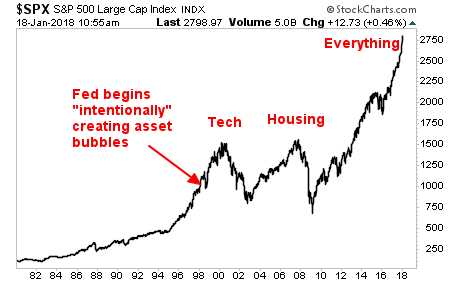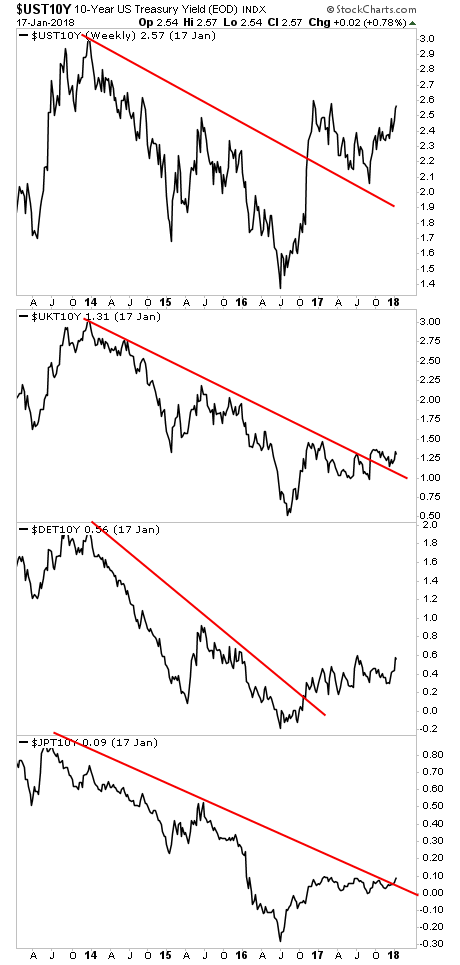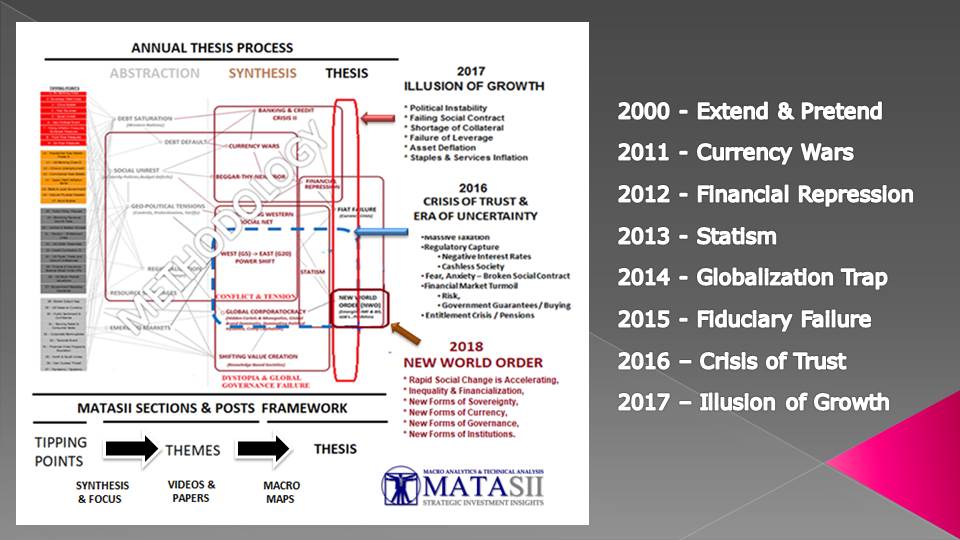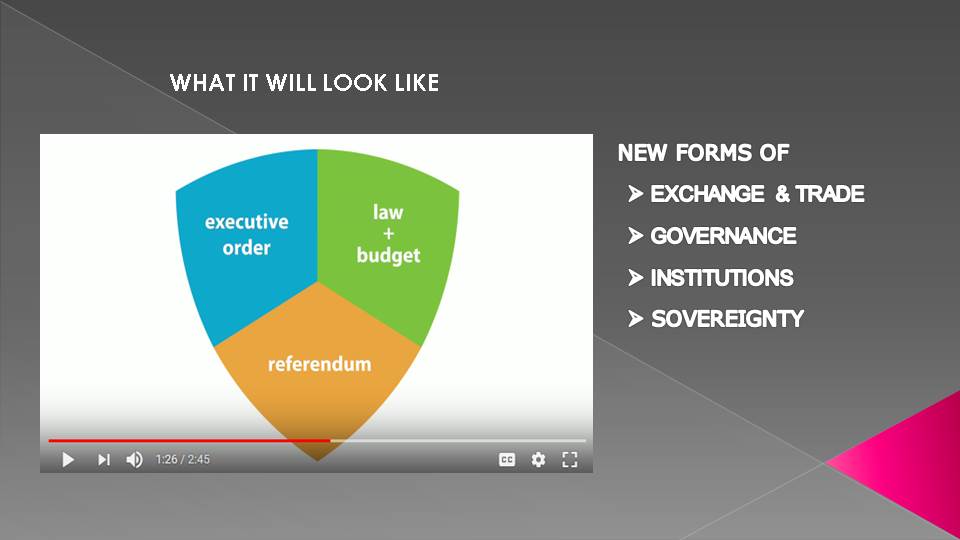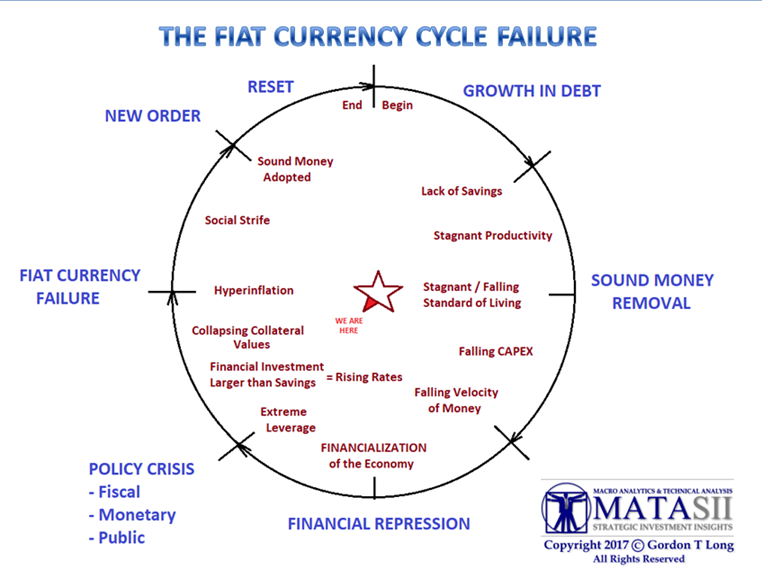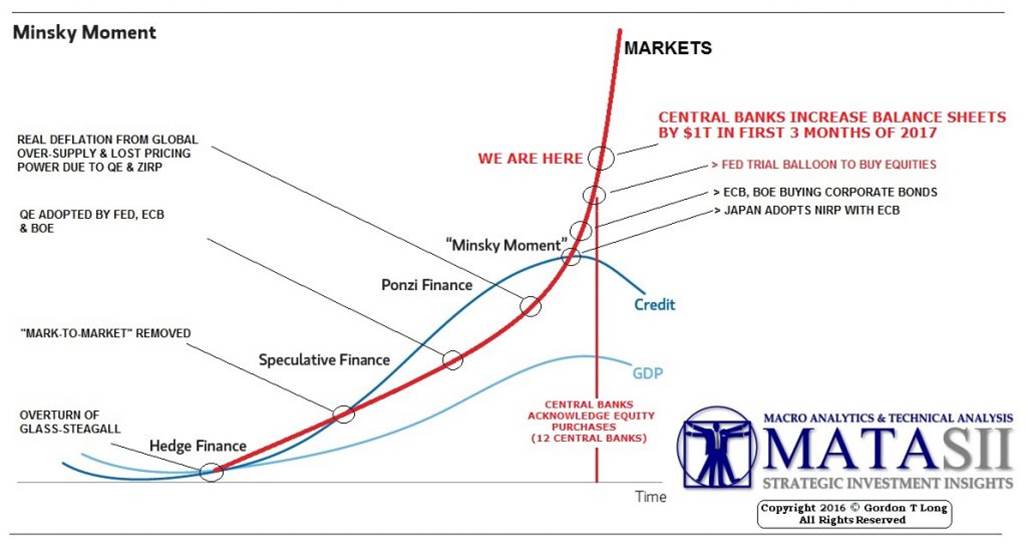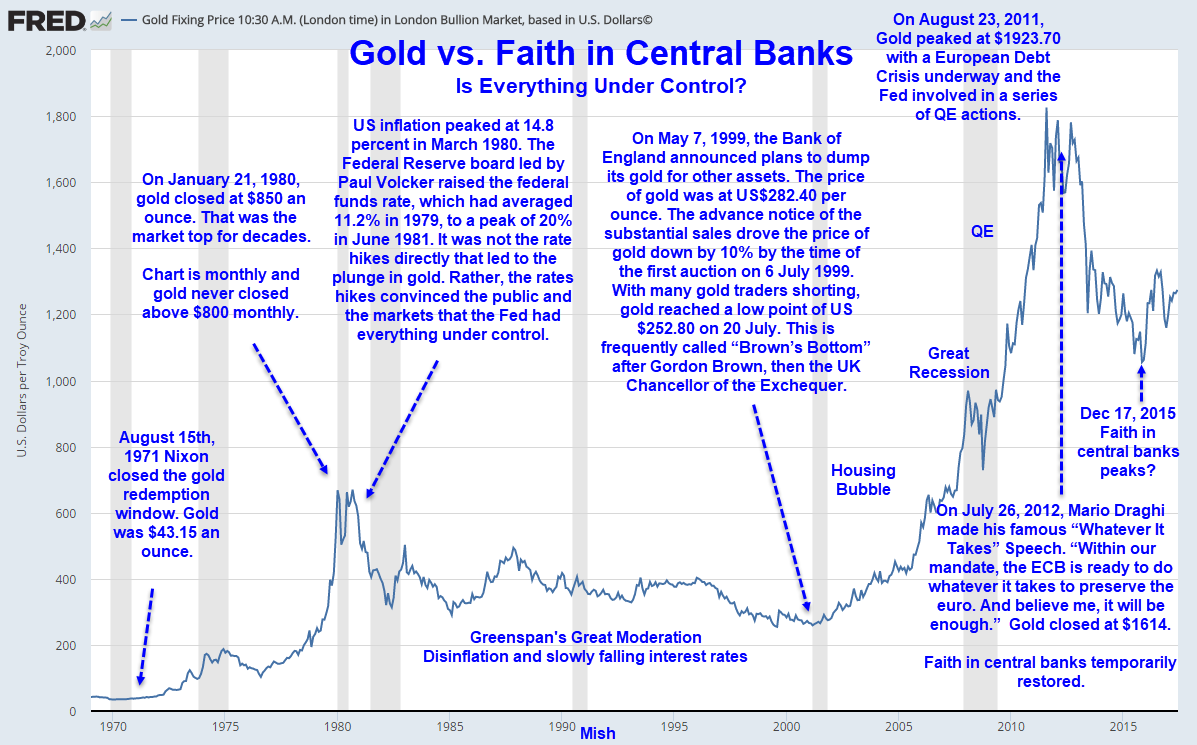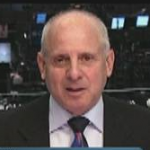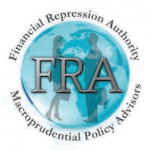
FRA: Hi, welcome to FRA’s Roundtable Insight. Today we have Yra Harris, Peter Boockvar and a new guest, Jim Bianco. Jim is President and Macro Strategist at Bianco Research. Since 1990, Jim’s commentary have offered a unique perspective on the global economy and financial markets. Jim’s wide-ranging commentaries have addressed monetary policy, the intersection markets and politics, the role of government in the economy, fund flows and positioning in financial markets. He is a Chartered Market Technician (CMT) and a member of Market Technician’s Association. Yra Harris is an independent trader, successful hedge fund manager, global macro consultant while trading foreign currencies, bonds, commodities and equities for almost 40 years. Yra is also the CME Director from 1997 to 2003. Peter is Chief Investment Officer for the Bleakely Financial Group and Advisory. He has a newsletter product called the Boockreport.com. His great macroeconomic insight and perspective with lots of updates on economic indicators. Welcome gentlemen!
Jim: Thank you!
Peter: Hey Rich!
Yra: Thank you, Richard!
FRA: Great! I thought we’d begin with a discussion on volatility. We did a podcast recently with Chris Whalen about a week before the volatility began in the financial markets; this year volatility to a significant extent. Jim, have you been seeing that as a trend through your research or what are your thoughts on that?
Jim: Not as a trend. Pretty much the opposite. Volatility events like what we’ve seen over the last couple of weeks are not the creation of a trend, they are the exaggeration of a trend. So there was a trend in place already and that trend in place was a turn towards more volatility. The turn towards more volatility was driven by a belief that, for the first time in the post-crisis era, inflation was returning. I’d get technical on you for fifteen seconds. What happened with the volatility event is we caught a short-ball traders on the wrong side of the trade. They did one simple narrow thing; blew up the VIX Market. The volatility measure on the S&P 500 Index option. That’s all they blew up. When we found that that spiked from 12.5 to 50 in two days, we found out how important the VIX is to everybody else. It was their measure of risk. When they saw it go up 400% in two days, they overreacted and the next thing you know, the DOW is down 1600 points. What I want to emphasize is they didn’t create the trend. The trend is towards higher inflation and that higher inflation would bring higher volatility and they got caught in the wrong side of it. All derivative debacles like this are an exaggeration of a new trend that everybody got caught on, not the creation of it.
FRA: And Yra, your thoughts on that?
Yra: You can’t say it better.
Peter: In 2017, we saw a hiccup in the US. The Fed decided to raise rates three times instead of one. Let’s start shrinking our balance sheet. That was overwhelmed by the Bank of Japan and ECB. In early 2018, when rates continued to rise, when the inflation pressure started becoming more evident that this is not a short-term bliss. Maybe this is the beginning a more normalized interest rate trend. One of the analogies that I’ve given in the past is when the central banks are full on easing, it gives investors goggles and it makes everything look perfect. When that starts to change, when that liquidity flow starts to slow and rates start to move then those goggles start to clear up a little bit. Monetary policy became more important. Markets are very reactive nowadays. (5:03 – 5:06 would not play. The audio automatically skips it). All of the sudden it woke people up and said,” Uh oh. This is a big deal. This is twice the level of what it was in the summer of 2016. I better start reassessing my positioning. I better start reassessing my leverage. I better start reassessing what valuation I want to place on the S&P 500. VIX and all these other things became a symptom, of what I call now, a disease of rising inflation and rising interest rates that then caused this explosion in volatility.
Yra: There’s been an argument in the market place that inflation is rising but so what. Higher interest rates is not a bad thing. They take the idea that when it comes to inflation, it is either Zimbabwe and it is really bad or it does not matter but there is a middle ground in there which is critically important. I’ve been saying people to stop talking about the Fed. Central banks as a collective, are the easiest they’ve ever been in the post-crisis era. Their balance sheets are the highest they’ve ever been in the post-crisis era this week. If inflation returns, it puts into jeopardy that we’re gradual. Bernanke said,” We are going to get balance sheet back to $2T to 2.5T and it could take until 2026. He wrote it in 2016. It will take 8 or 10 years to get that. If we have inflation, maybe that 8 to 10 years is now 2 years. By the end of the year, you’re going to have a contraction out of the ECB and the BOJ. That’s where inflation matters. It’s going to force central banks to pull in a lot faster than people thought. One last thing. Wall Street runs into this trap all the time. Somebody points out a risk, everybody looks at their watch and says,” Well, we waited eight minutes. The market has not blown up. I guess that risk does not matter.” There’s a risk from all of this money printing. For the first time in nine years, we have an inflation fear and is now putting doubt in central banks. Now, what’s the first thing that markets do? They have a ___ (7:41 inaudible and the podcast skips it) over that. I think that this inflation fear that makes everybody say,” Bring it on! 3.25 is really good in interest rates.” Be careful what you wish for because that is going to cause a reversal especially in the BOJ. If we continue to see global inflation fears rise, the Fed is already tightening right now, that’s why I said do not talk about central banks. This should be a big deal for markets in 2018 and most people continue to dismiss it.
Peter: Just to add on, with respect to what you said, Jim, on balance sheets being at record highs. The analogy we have given out is that yes, they are at record highs but balloon with the air being central banks easing. There’s still air going into that balloon but there’s less air going in. If there’s less air going into that balloon, that balloon is still going to contract. I think it’s the rate of change that is really changing dramatically in terms of central bank (8:41 podcast skips it – inaudible).
FRA: Could the return of inflation force all central banks to accelerate their exit strategy or just some?
YRA: (9:03 – 9:07 inaudible) was just reappointed with a very (9:08 inaudible) group around him. (9:10 – 9:22 podcast skips it). … stand on fiscal policy is used on the sales tax. Draghi dug himself into a hole. (9:25 – 9:52 some are skipped and inaudible). … How do you get out of this? Peter and Jim are both right. Forget about the Feds. Everybody follows the Bernanke book but they’re stuck in a situation here. To me, that’s really dangerous.
Jim: One quick thing about the ECB. Draghi’s term has a little bit more than a year to go before he’s done. The tradition in the ECB is that the next ECB Chairman will probably be German. It does not have to be a German but probably will be a German. That’s code word for a very hard money person. If you’re going to get inflation and you’re going to get a German to run the ECB, you’re going to get a violent reversal in the next eighteen months. Look at two weeks ago. Two Thursdays ago when the DOW was down 1000 points, what was the catalyst story that everybody said? There’s inflation in the UK and the BOE (Bank of England) might have to double the rate hikes that they’re going with. When was the last time the BOE moved the US stock market? That might’ve been the first time. It’s all because of this idea that central banks is maybe peaking soon and starting to reverse. We haven’t had to deal with that possibility until the last two or three months. It was only in the last two or three months that we’ve only really started to see inflation. What Yra said is right that maybe Japan continues to pump money but they might not be enough to do it. If everybody else is going to reverse, then those global central bank balance sheet will peak. These markets will have a digestion problem with that.
Peter: Just to add on to what Jim said, even the Riksbank in Sweden, which is not necessarily relevant for the global economy, experimented with negative interest rates along with others. It’s a good symbolic gesture. They said they’re going to start the process of getting out of negative interest rates well before the ECB starts. Just going back to zero from negative is going to cost an extraordinary amount of loss. The ripple effect that that’s going to have on the world, I don’t think the people will appreciate it. I like to remind people in terms of the concept of risk happening fast. It was 2015 when, the German 10-year went from 6 basis points to 60 in one month and from 60 to 100 points a month later. This is Germany. Not Greece. Not a third-world country. This is a country that went from a 6 basis points to 100 in less than 2 months.
FRA: How could all of this translate onto a change in basic relationship between stocks and bonds? Jim, you mentioned there would likely be a change on that once again?
Jim: First of all, just as a point of emphasis. One of the things that could change it back another way is that if the doubt of inflationary fears go away. There was a mild form of inflation fears about a year ago and then it went away. The difference between now and a year ago is that we’re finding out that the market, collectively, is a bunch of Phillips Curvers. They’re looking at the stimulus from tax cuts, possibility of infrastructure spending, strong growth and that they’re concluding we’re not going to have inflation after we spend thirty years trying to say that the Phillips Curve does not creation inflation. If it is decided that there is inflation, then there is inflation. That’s where it is coming from. To your question about the stocks and bonds relationship, it changes all the time between the way that stocks and bonds trade together. In 1998 to 2000, it changed. What I used to call is under the inflation mindset. In the 1960s to 2000, the starting point of every discussion was, are we having inflation? If the answer was yes, if bond prices went down then stock prices went down. If the answer was no, the 80s and 90s, were not having inflation, then bond prices went up, interest rates went down went up. Bond prices and stock prices move together. Starting around 1998 to 2000, we switched that dynamic because we were worried about deflation. During the middle of that dynamic, we had long-term capitals, the Asian crisis, the tech bubble, sounds like the derivative thing we’ve been talking about the last few weeks as well. Throughout the 2000s until very recently, we worried about deflation. Are we having deflation? If the answer was yes, equity prices struggle. If there was no deflation, then equity prices went up. So now bond and stock prices move opposite of each other. What we’ve seen in the last few weeks is the decline of bond prices and stock prices together since the financial crisis that they both went down together. The day the DOW was down off 300 points. Up until 60 days ago, if you just randomly told me in the last nine years that the DOW was down 300 points, I would’ve said (16:40 – 16:42 inaudible). That’s the way we traded every single time. I think we’re shifting to an inflation mindset. Now where does that matter? In the last nine years, Wall Street has pushed this idea of a 60:40 portfolio. That it’s the optimal way to invest your money; sixty percent in equities and forty percent in bonds because something is always going up. Either there is no deflation and stocks are going up or there is deflation and bonds are going up. But under the new scenario, either they’re all going up or they’re all going down. Both of them have been falling together. So this idea where you can take a lot of risk with a 60:40 portfolio is going to be blowing up on people’s faces. This means that the relationship between stocks and bonds are transitioning right now. It takes around two years to fully transition it. I don’t know if it will take fully two years now but it will take at least months to do it. There will be periods where it does look like they’re transitioning but I do think that we’ve started that process.
FRA: And Yra, do you see that relationship also changing?
Yra: Yes. This whole risk parity. To me, what people don’t understand, is especially on the issue on how you get of out this. Ray Dalio said you’re going to shed tears if you earn cash. Talking about a coming change. That’s in a two week time period. It scared me. Ray Dalio is a great thinker.
Jim: Just to emphasize something on what Yra said that the single hardest thing to do for anybody that’s investing is to recognize the regime that the old rules stopped working. Most people can’t and they keep pounding away with the old rules until they are out of business. The single hardest thing to do in any type of investing is say that we’re now in a regime shift. If you’re wrong, you get wiped out and if there’s no regime shift and you say it is, you also get wiped out. If there is a regime shift and you don’t adapt, you get wiped out. That’s why we have this volatility and blow ups along the way.
Yra: That’s right. And what I think people fail to understand is not just Dalio’s position. It is everybody that has handled this book and tail-coated it. I know a lot of people in banks or foreign exchange traders who made a fortune and have tail-coated George Soros in the BOE. If BOE reacted like the Bank of France and raised interest rates to 100% and said,” We’re just going to do whatever we have to do and you have to pay the cost.” He wasn’t successful in breaking the (2:38 – 2:40 inaudible)… to exit that train would’ve been an enormous pain for all the people who followed them in. So whatever you think Dalio’s positions are, which I think are enormous is tail-coated and recreated the same trades in many other ways. I think that’s what we’re told in the last two weeks. He’s got a lot of company in this low volatility place.
FRA: And Peter, your thoughts also?
Peter: I also think a lot of people lost perspective on the markets. When you turn on the T.V or the radio or when you read the paper, while earnings are great in the economy’s trade and therefore stocks are going to go up and I just want to point out that that’s from the end of 2012. So the calendar year at the beginning of 2013, the January 26th peak at the S&P, the S&P 500 was up 100%. Earnings since then, assuming 2018 assuming $100 to $150 per share, earnings should be up 60%. So the differences is actually multiple (21: 52 Inaudible). When interest rates rise or when people reassess what central banks are doing, why should people pay eighteen times their earnings? All of a sudden, within a week and a half, they decided let’s pay sixteen times with a one dollar change per earnings per share. Every one-term PE is 155 points (22:15 podcast skips, inaudible) while when we’re talking about two-term PEs, that’s 310 points. I think people need to have perspective that the stock market has ran well ahead of the rise in earnings and the difference is PE multiple expansions. It is now compressing because of the new regime change that we were talking about.
FRA: Could the rising interest rates in the U.S. cause us strengthening in the dollar (22:46)… rising defaults in the U.S dollar denominated debt in emerging markets which is estimated approximately $9T? Could that happen or could it also spur a financial crisis in Europe out of the bond markets? Would that mean that international capital flows coming into the U.S. towards U.S. dollar denominated assets? Just some potential scenarios. Jim, your thoughts?
Jim: I would come down on the idea of ‘no’. Let me explain what I mean by ‘no’. There’s this perception in markets that there’s all this money. There is no money heaven. No one ever loses this their money, it just gets allocated around. When the stock market goes down, but all the money from the bond market will come in to replace the stock market money that went down. I do not think you’re going to see some kind of reallocation where everybody is going to come running into the United States and it’s going to (23:53 podcast skips it, inaudible) the U.S. stock market and it is going to hurt them as well. I think the problem with the dollar, and I’ve been wrong with the dollar for several months now, is that the speculative flows are at record highs for some of them. Everybody is selling the dollar or is shorting the dollar right now. This has been keeping it unnaturally strong. If you wanted me to guess why we’re getting a persistent selling of the dollar, foreigners are basing their investments on who the president of the U.S. is. Sell the dollar. Investors have finally realized that it doesn’t matter. Eventually, that’s going to come back to foreigners and make them realize it matters. Your investments in a political idea might see a strengthening in the dollar. But are you going to see some kind of a wholesale run into the dollar that you were suggesting “no, I don’t think I’m going to see that.”
FRA: Yra, your thoughts?
Yra: I haven’t (25:12 – 25:13 Inaudible) … since Mark Fields’ comments back in 2017. Now, I’m fairly neutral towards it because it’s been a (25:24 inaudible) for people because interest rates in the United States are going up and (25:28 – 25:38 podcast skips it and inaudible). I’m scratching my head. If the deficit scare is real, I think what they did here by blowing the budget apart and the stimulus is that the people are a bit nervous. I don’t disagree with Jim because I’m really neutral with the dollar. If we go to real yields, Peter wrote about it today, the least positive on the short end of the paper rate I’d say is about 40 basis points based on the number that we have. The dollar would get a kick especially if the other central banks are just sitting there complacently because they would like their currencies to weaken anyway. I think Mario Draghi would like the Euro to weaken. I think the Japanese policies are driven by the desire for a weaker yen with the Trump agenda. People are being conscious and would like to see the dollar strengthen in relative to their own currencies. So, I’m going to wait. I don’t really have a good sense to where we go from here.
FRA: And Peter, your thoughts?
Peter: I’m bearish on the dollar in the short-term but considering the moves it has had, I’m definitely more uncertain about the very short-term move. We went into the year saying they’re going to increase the rates three times but then the markets really doubted it and now have the rising inflation that is probably happening. Higher inflation that’s not met by a rising Fed funds rate is typically dollar bearish. The Fed is going to raise three times this year. Take the Fed’s fund rate to a real rate of zero. That, of course, is well above where it is overseas, especially in Europe and Japan. But there is a reality that people still think it’s jamming around 2.0 even though maybe he’s not. But it’s still going to be on its gradual path. So there’s no way the Fed is getting ahead of the curve. They’re still going to be playing catch-up on top of better overseas economies that’s drawing dollars into other areas of the world. There are secular headwinds to the dollar but I’m less certain. I was very certain when the euro was 1.05 but much less certain when the euro is 1.25 in the short-term. I would not be surprised if, within the next two years, we see the euro at 1.40. It would not surprise me at all if we see the pound at 1.60. That’s were eventually heading within the next couple of years.
FRA: Jim, you mentioned this whole environment could be like the 90s when the markets went down and everything else. Where do investors and traders go to?
Jim: That’s the old 60:40 risk. Something is always going up. Yeah, I guess somebody is going to win the lottery today too. If an asset class is going to be rising, the answer is that they’re going to be small. Commodities might be rising but 95% of the money in the world is not in commodities. We’re creating a new asset class; cryptocurrencies. I, personally, think is an outgrowth of the rejection of policy. Inflation pressures financial markets. They go down. Stocks go down. Bonds go down. That was, ask Yra, that was the 1970s. I’m not saying we’re going to have high levels of inflation but what we’re going to have is that the stimulus will give you an appearance of high levels of inflation. So, I think that it’s going to be very hard to find, other than special situations like in the commodities markets, beyond that is going to be very difficult to find ideas where you can profit while returning to an inflationary environment.
FRA: And Yra, your thoughts?
Yra: I agree with Jim. What we’re going to see is (31:01 – 31:08 inaudible). Let’s say that the Phillip’s Curve may be able to get it right for a short period of time. We get higher interest rates. And now (31:27 – 31:30 inaudible)… 60:40 because they are both going to go down. I’m not a Phillip’s Curve advocate but if inflation does that. Those are both detrimental for corporate profits because rising wages with rising interest rates (31:42 – 31:53 inaudible). I just don’t see it. I know Peter has looked at this. (31:01 – 32:07). All these companies that borrowed a lot of money (32:09 – 32:15 inaudible). Take the interest rates expense, it is down to a really low level but we know that’s not going to last because for every one percent rise in the cost in borrowing, it’s going to hit discretionary spending levels dramatically. People are in for a shock here. It is really fascinating that (32:39 – 32:52 inaudible). It really does not make any sense. We’re much more worried about inflation. We know how to deal with inflation. In an interview that he did. So, you’re going to get into a feedback where at 60:40, they’re going to be sorry.
FRA: And Peter?
Peter: Just to quantify on what Yra said in terms of profit margins, lower labor costs and lower interest expense are the two biggest contributors for corporate profit growth from the 09 bottom. Just to quantify, there is about $13.5T of total business debt. So for every 100 basis points of interest cost, is $135B. Now, obviously, a lot of companies have turned down debt. But, generically speaking, in terms of labor costs, companies pay about $7T of labor cost every year. Let’s just combine that. (33:50 – 34:00 skips and inaudible)… higher costs that more than offsets the cut in the corporate tax rate from 35% to 21%. A lot of the estimates that is out there for earnings per share are all else equal analysis. It does not take into account higher labor cost and higher interest cost. When a lot of (34:23 – 34:24 inaudible) come out with their year-end price targets, it doesn’t include a lower PE ratio. It is static analysis. In terms of where to survive here, I would not be surprised if a two-year T-Bill paying 2.25% interest rate outperforms the equity market in a broad basket of corporate credit over the next few years. I think the commodity space is very interesting. I know a lot of people like to look at the demand side in terms of dictating prices but since that 2011 – 2012 peak in commodities, the (35:03 skipped) collapsed. Not only industrial metals, but also energy and particularly agriculture, which I’ve been very bullish on and on my belief on the dollar, I think gold and silver will outperform most equities and certainly fixed income within the next couple of years.
Jim: There’s $13T worth of debt and most of it has been turned out. This means rates goes up now but I’ve got 3 – 5 years to maturity. So I don’t see risk immediately. In the last ten years or so, there’s been a lot of people that have been turning up their debt through derivatives markets. They have been engaged in floating or fixed payments or receiving to take shorter-term debt and turn it out into longer-term debt. That is when you get a spike in volatility. Even that is going to start to come back to this day. Well I’ve got all of this short-term debt. The Fed is going to raise its rates. What am I going to do? I’m going to engage in swaps contracts in order to it mimic a 5-year note or a 10-year note but now it is more expensive to buy that swap contract because volatility is going up. That’s going to start hitting their bottom line too.
FRA: Great! Thank you very much gentlemen for your great insight. Just wondering, how can our listeners learn your work or go around? Jim?
Jim: Probably the easiest way is to follow us on twitter @BiancoResearch.com or at our website BiancoResearch.com
FRA: And Yra?
Yra: At YraHarris.com and the blog is from underground (36:58 – 37:10 inaudible). Food for thought.
FRA: And Peter?
Peter: My twitter is Pboockvar and subscribe to my daily writings at boockreport.com and my managing business is bleakley.com
FRA: Great! Thank you very much gentlemen.




 02/24/2018 - The Roundtable Insight: Jim Bianco, Yra Harris & Peter Boockvar On Investing Implications Of Volatility & Inflation
02/24/2018 - The Roundtable Insight: Jim Bianco, Yra Harris & Peter Boockvar On Investing Implications Of Volatility & Inflation



